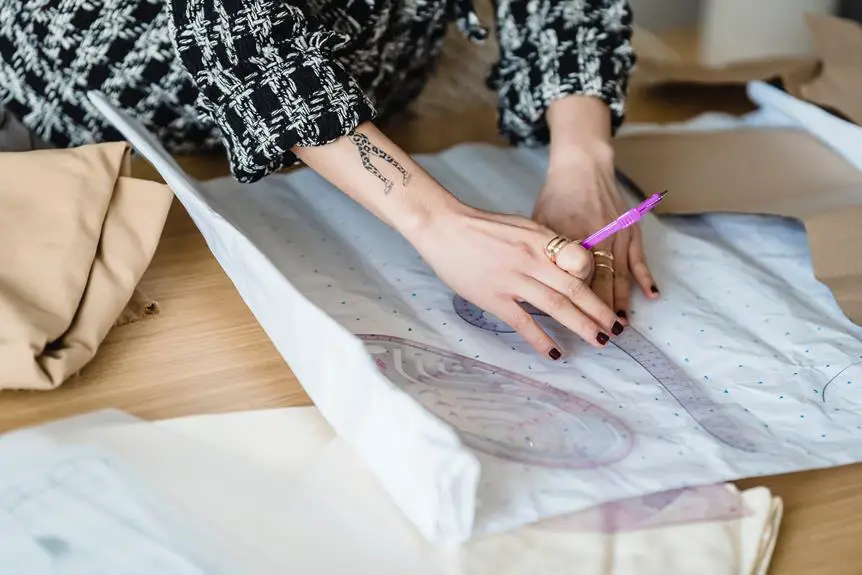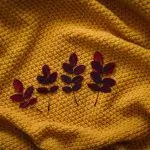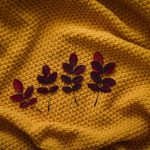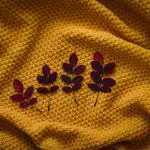You've embarked on a journey through the vast landscape of sewing, where fabric is your canvas and thread your brush. Mastering the art of sewing requires an understanding of the essential types of fabrics that form the foundation of every project.
From the versatile cotton to the luxurious silk, each fabric possesses its own unique characteristics that can elevate your creations to new heights. In this guide, you will explore the seven essential types of fabrics that every sewing enthusiast should have in their arsenal.
Understanding the properties and uses of these fabrics will empower you to bring your sewing projects to life with confidence and precision.
Key Takeaways
- Cotton is highly absorbent, hypoallergenic, easy to care for, and versatile for a wide range of projects.
- Silk is remarkably breathable, requires delicate care, has a long history associated with luxury, and offers a timeless elegance.
- Denim is known for resilience, versatility, a classic and fashionable look, and is ideal for everyday wear and tear.
- Flannel is soft and comfortable, durable, easy to care for, and provides warmth and insulation for cold weather garments.
Versatile Cotton
You'll find that versatile cotton is a staple fabric in many sewing projects due to its durability and breathability. Cotton offers numerous benefits, making it a favorite among sewers.
It's highly absorbent, which allows for comfortable wear in warm weather. Additionally, it's hypoallergenic, making it suitable for those with sensitive skin. Cotton is also relatively easy to maintain, as it can be machine washed and dried without much hassle.
When compared to other fabrics, cotton stands out for its ability to withstand high temperatures, making it ideal for ironing and disinfection. Its natural fibers are also less likely to cause static electricity compared to synthetic materials.
Moreover, cotton's durability ensures that garments made from this fabric can withstand frequent washing and regular wear. This fabric is also versatile, as it can be used for a wide range of sewing projects, from clothing to quilting. Its ability to breathe and allow air circulation makes it a top choice for creating comfortable and long-lasting pieces.
Luxurious Silk
Why is silk considered a luxurious and sought-after fabric for sewing projects?
Silk is renowned for its luxurious feel and natural sheen, making it a timeless choice for elegant garments and exquisite home decor. Here are some key points to consider when working with this coveted fabric:
- Silk Advantages: Silk is prized for its remarkable breathability, making it ideal for both warm and cool climates. Its natural protein structure also provides hypoallergenic properties, making it suitable for sensitive skin.
- Silk Care: Proper care is essential to maintain the beauty and integrity of silk. Hand washing in cold water with a gentle detergent is recommended, as silk is sensitive to heat and strong chemicals. Avoid wringing or twisting the fabric and instead gently press out excess water and air dry away from direct sunlight.
- Silk History: With a history dating back to ancient China, silk has long been associated with luxury and refinement. Its production was once a closely guarded secret, contributing to its high value and prestige.
- Silk Production: The process of creating silk involves carefully harvesting silkworm cocoons and extracting delicate filaments to spin into thread. This meticulous production contributes to the exclusivity of silk fabric.
Silk's unparalleled elegance and timeless allure make it a favorite choice for sophisticated sewing projects.
Durable Denim
Durable denim is a versatile fabric that offers both strength and style for a wide range of sewing projects. Its durability and timeless appeal make it an essential choice for creating sturdy garments such as jeans and workwear, as well as fashionable items like jackets, skirts, and accessories. Denim's sturdy nature allows for long-lasting pieces that can withstand everyday wear and tear, making it an ideal option for both practical and stylish sewing endeavors.
| Durable Denim | Features |
|---|---|
| Durability | Known for its resilience and ability to withstand frequent use. |
| Versatility | Suitable for creating a variety of garments and accessories. |
| Timeless Style | Offers a classic and fashionable look that never goes out of trend. |
| Strength | Provides a sturdy fabric base that holds up well over time. |
Whether you are aiming to create a pair of durable jeans for everyday wear or a fashionable denim jacket, this fabric is an excellent choice. Its ability to blend practicality with style makes it a staple in any sewing enthusiast's collection.
Cozy Flannel
When choosing fabrics for your sewing projects, consider incorporating cozy flannel for its versatility and comfort.
It's an excellent choice for making cozy pajamas, as it provides a warm and soft feel against the skin.
Additionally, flannel is a great option for winter projects, as it offers both warmth and style to your creations.
Versatile for Pajamas
For making pajamas, you'll want to consider using cozy flannel fabric for its softness and warmth. Cozy flannel is an excellent choice for pajamas due to its remarkable characteristics. Here are some reasons why it's a versatile option:
- Soft and comfortable against the skin, providing a cozy feel for a good night's sleep.
- Lightweight and breathable, allowing for airflow and preventing overheating during the night.
- Durable and long-lasting, ensuring that your pajamas will stand the test of time.
- Easy to care for, as flannel fabric is often machine washable and maintains its softness.
- Available in a wide range of colors and patterns, allowing you to create stylish and personalized pajama sets effortlessly.
Consider these factors when choosing fabrics for your pajama projects.
Great for Winter Projects
How can cozy flannel fabric elevate your winter sewing projects? Cozy flannel is the perfect fabric for creating warm and comfortable winter garments. Its soft, brushed surface provides excellent insulation, making it ideal for crafting cozy and stylish pieces such as knitted sweaters and fleece jackets. The fabric's versatility allows you to design a wide range of winter essentials that are not only practical but also fashionable. Whether you are a beginner or an experienced seamstress, working with flannel is a rewarding experience that yields beautiful results. Embrace the warmth and comfort of flannel as you embark on your winter sewing projects.
| Advantages of Flannel for Winter Projects | Description |
|---|---|
| Warmth and Insulation | Ideal for cold weather garments |
| Versatility | Suitable for various winter clothing |
| Comfortable Texture | Provides a cozy feel |
| Fashionable Design Options | Allows for stylish winter creations |
Easy to Sew
Cozy flannel fabric is easy to sew and offers a comfortable and warm texture for your winter sewing projects. When working with this beginner-friendly fabric, keep these sewing machine tips in mind:
- Use a universal needle for best results.
- Adjust your machine's stitch length to accommodate the thickness of the flannel.
- Consider using a walking foot to prevent fabric shifting.
- Before cutting, pre-wash and dry the flannel to minimize shrinking.
- When cutting the fabric, employ sharp scissors or a rotary cutter for clean edges.
Choosing the right needles and mastering fabric cutting techniques are essential for sewing with flannel. By following these guidelines, you can ensure a smooth and enjoyable sewing experience with cozy flannel fabric.
Elegant Satin
If you're looking for a fabric that exudes elegance, satin is the perfect choice. Its luxurious drape and shine make it a popular option for formalwear, such as evening gowns, blouses, and accessories.
Additionally, satin's versatility allows it to be used in a variety of sewing projects, adding a touch of sophistication to any garment.
Luxurious Drape and Shine
Achieve a luxurious drape and elegant shine in your sewing projects with satin. This exquisite fabric offers a silk sheen and luxurious feel, making it perfect for creating garments and accessories with draping elegance and luxurious shine.
When working with satin, keep these pointers in mind to maximize its stunning qualities:
- Proper Cutting: Use sharp scissors to ensure clean, precise cuts without snagging the delicate fibers.
- Careful Stitching: Employ fine, sharp needles and silk thread to prevent snags and visible stitches, maintaining a seamless finish.
- Gentle Handling: Take care to avoid excessive pulling or stretching, as satin is prone to distortion.
- Pressing Techniques: Use a pressing cloth and low heat to avoid damaging the fabric's delicate luster.
- Lining Consideration: Consider using a lining to enhance the luxurious feel and drape of your satin creations.
Versatile for Formalwear
To achieve a sophisticated and elegant look in your formalwear projects, satin is a versatile fabric choice that offers a luxurious sheen and graceful drape. When working with formalwear fabrics, it's crucial to select materials that exude elegance and sophistication. Satin is a go-to option for creating stunning evening gowns, formal blouses, and luxurious linings. Its smooth and lustrous surface adds an opulent touch to any outfit, making it ideal for special occasions and formal events. When caring for satin fabric, it's essential to handle it delicately, as it can be prone to snags and pulls. Dry cleaning or hand washing with mild detergent is recommended to maintain its beautiful sheen and texture. Embrace the versatility and elegance of satin to elevate your formalwear creations.
| Pros of Elegant Satin | Cons of Elegant Satin | Tips for Fabric Care |
|---|---|---|
| Luxurious sheen | Prone to snags and pulls | Dry clean or hand wash with mild detergent |
| Graceful drape | May require lining for opacity | Avoid high heat when ironing |
| Versatile for formalwear | Sensitive to water and stains | Store in a cool, dry place |
Stretchy Knits
When working with stretchy knits, you'll need to pay attention to both the fabric's stretchiness and its recovery. It's essential to select the right type of stretchy knit for your sewing project to ensure a successful outcome.
Here are some key points to consider:
- Stretch Percentage: Different stretchy knits have varying degrees of stretchiness. Be mindful of the stretch percentage required for your pattern to ensure the garment fits as intended.
- Recovery: Look for stretchy knits with good recovery to prevent the fabric from becoming stretched out and losing its shape over time.
- Pattern Options: Choose sewing patterns specifically designed for stretchy knits to make the most of their unique characteristics.
- Fabric Care: Pay attention to the fabric care instructions, as some stretchy knits may require special handling to maintain their stretch and recovery properties.
- Sewing Techniques and Styling Tips: Learn and employ suitable sewing techniques for stretchy knits, such as using a walking foot or a stretch needle. Additionally, consider styling tips that complement the drape and stretch of the fabric.
Working with stretchy knits can be rewarding when approached with the right knowledge and techniques.
Breathable Linen
For your sewing projects, consider incorporating breathable linen as it offers a lightweight and airy option for creating comfortable and stylish garments. Linen is a natural fiber derived from the flax plant, making it an eco-friendly choice for your sewing projects. Its breathability and moisture-wicking properties make it perfect for summer garments, ensuring that you stay cool and comfortable even in the heat.
Additionally, linen is a wrinkle-resistant fabric, making it incredibly travel-friendly. This means that your garments will look fresh and crisp even after being packed in a suitcase or bag.
When working with linen, it's essential to prewash the fabric to allow for any shrinkage. Due to its natural fibers, linen can shrink, and prewashing helps to minimize this issue. Additionally, consider using a slightly larger seam allowance to accommodate any potential shrinkage after washing the finished garment.
Incorporating breathable linen into your sewing projects not only offers practical benefits but also adds a touch of timeless elegance to your wardrobe. Its versatility allows for the creation of a wide range of garments, from casual everyday wear to more formal attire, making it a valuable addition to any sewing enthusiast's fabric collection.
Frequently Asked Questions
Can These Fabrics Be Easily Dyed or Printed on for Customization?
Yes, these fabrics can be easily dyed or printed on for customization. Their versatility allows for various dyeing and printing techniques, enabling you to personalize the fabric to your preferences. Customization options are abundant with these fabrics.
Are There Any Special Care Instructions for Washing and Maintaining These Fabrics?
To maintain fabric durability, follow care instructions on the label. For delicate fabrics, hand wash in cold water; for sturdier ones, machine wash on a gentle cycle. Avoid bleach and excessive heat when drying.
Which Types of Sewing Projects Are Best Suited for Each Fabric?
When choosing the right fabric for your sewing projects, consider the fabric's weight, drape, and stretch. For structured garments, opt for cotton or linen. Knits work well for versatile pieces like dresses and activewear. Happy sewing!
Are There Any Specific Needle or Thread Recommendations for Working With These Fabrics?
When working with different fabrics, it's essential to match the needle and thread to the fabric type. For delicate fabrics like silk, use fine needles and lightweight threads. Stronger fabrics like denim require heavier needles and threads for secure stitching.
Where Can I Find High-Quality Versions of These Fabrics for My Sewing Projects?
You can find high-quality versions of these fabrics for your sewing projects at specialty fabric stores or online fabric sources. Keep an eye out for sales and discounts to get the best pricing without compromising on fabric quality and reliability.
- How Does Ring Spun Cotton Affect Garment Fit and Shape Retention? - August 13, 2024
- What Are the Challenges in Producing Ring Spun Cotton? - August 13, 2024
- Is Ring Spun Cotton Suitable for Plus-Size Clothing? - August 13, 2024






